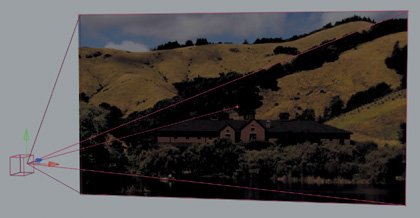Expressions

Music is math.
Michael Sandison and Marcus Eoin (Boards of Canada)
Expressions extend the functionality in After Effects by enabling you to link elements of your project together and apply logical and mathematical relationships.
Did your eyes just glaze over? Here is where the standard disclaimer is usually added about how artists don't like logic and bits of math and where I promise to shield you from it as much as possible.
I don't buy it: As an After Effects artist, you already deal with this stuff all the time. If you're not making full use of expressions, you're missing out on a more elegant approach that can eliminate tedium.
Eliminate tedium? But, you reply, expressions require the use of code. What could be more tedious to a visual artist than managing code?
This chapter makes the case that it's worth dealing with a little codeoften just one line in these examples, all or part of which can be entered automaticallyto attain the flexibility and power of expressions. The examples given here relate directly to other techniques explored in this book. They are practical, not theoretical.
To give you a taste of what is possible with expressions, here are some of the case studies explored in this chapter:
- Create an automatic one-to-one relationship between data from two animation channels (whether from the same layer, separate layers, or even separate compositions)
- Scale and offset property values
- Link values to a slider control for easy access
- "Mute" keyframe values by replacing them with a constant value
- Loop, with several different options how you do it
- Destabilize or smooth camera moves or any animation data (without affecting or destroying the data)
- Use time and index values to progress animation data
- Create a conditional statement that causes something to happen when specified criteria are met
- Trigger actions to occur automatically under specific circumstances
- Emulate 3-D tracking in a forward-moving shot
Overall, the goal, as always, is to provide a guidebook rather than a recipe book, enabling you to build on the understanding you gain here by moving from simple to complex examples.
Logic and Grammar |
Section I. Working Foundations
The 7.0 Workflow
- The 7.0 Workflow
- Workspaces and Panels
- Making the Most of the UI
- Settings: Project, Footage, Composition
- Previews and OpenGL
- Effects & Presets
- Output: The Render Queue
- Study a Shot like an Effects Artist
The Timeline
- The Timeline
- Organization
- Animation Methods
- Keyframes and The Graph Editor
- Uber-mastery
- Transform Offsets
- Motion Blur
- Manipulating Time Itself
- In Conclusion
Selections: The Key to Compositing
- Selections: The Key to Compositing
- The Many Ways to Create Selections
- Compositing: Science and Nature
- Alpha Channels and Premultiplication
- Masks
- Combining Multiple Masks
- Putting Masks in Motion
- Blending Modes: The Real Deal
- Track Mattes
Optimizing Your Projects
- Optimizing Your Projects
- Navigating Multiple Compositions
- Precomposing and Nesting
- Adjustment and Guide Layers
- Understanding Rendering Order
- Optimizing After Effects
- Onward to Effects
Section II. Effects Compositing Essentials
Color Correction
Color Keying
- Color Keying
- Good Habits and Best Practices
- Linear Keyers and Hi-Con Mattes
- Blue-Screen and Green-Screen Keying
- Understanding and Optimizing Keylight
- Fixing Typical Problems
- Conclusion
Rotoscoping and Paint
- Rotoscoping and Paint
- Articulated Mattes
- Working Around Limitations
- Morphing
- Paint and Cloning
- Conclusion
Effective Motion Tracking
- Effective Motion Tracking
- The Essentials
- Optimizing Tracking Using 3D
- Extending a Track with Expressions
- Tracking for Rotoscoping
- Using 3D Tracking Data
- Conclusion
Virtual Cinematography
- Virtual Cinematography
- 5D: Pick Up the Camera
- Storytelling and the Camera
- Camera Blur
- The Role of Grain
- Film and Video Looks
- Conclusion
Expressions
- Expressions
- Logic and Grammar
- Muting Keyframes
- Linking Animation Data
- Looping Animations
- Smoothing and Destabilizing
- Offsetting Layers and Time
- Conditionals and Triggers
- Tell Me More
Film, HDR, and 32 Bit Compositing
- Film, HDR, and 32 Bit Compositing
- Details
- Film 101
- Dynamic Range
- Cineon Log Space
- Video Gamma Space
- Battle of the Color Spaces
- Floating Point
- 32 Bits per Channel
- Conclusion
Section III. Creative Explorations
Working with Light
- Working with Light
- Light Source and Direction
- Creating a Look with Color
- Backlighting, Flares, Light Volume
- Shadows and Reflected Light
- HDR Lighting
- Conclusion
Climate: Air, Water, Smoke, Clouds
- Climate: Air, Water, Smoke, Clouds
- Particulate Matter
- Sky Replacement
- The Fog, Smoke, or Mist Rolls In
- Billowing Smoke
- Wind
- Water
- Conclusion
Pyrotechnics: Fire, Explosions, Energy Phenomena
- Pyrotechnics: Fire, Explosions, Energy Phenomena
- Firearms
- Sci-Fi Weaponry
- Heat Distortion
- Fire
- Explosions
- In a Blaze of Glory
Learning to See
Index
EAN: 2147483647
Pages: 157
